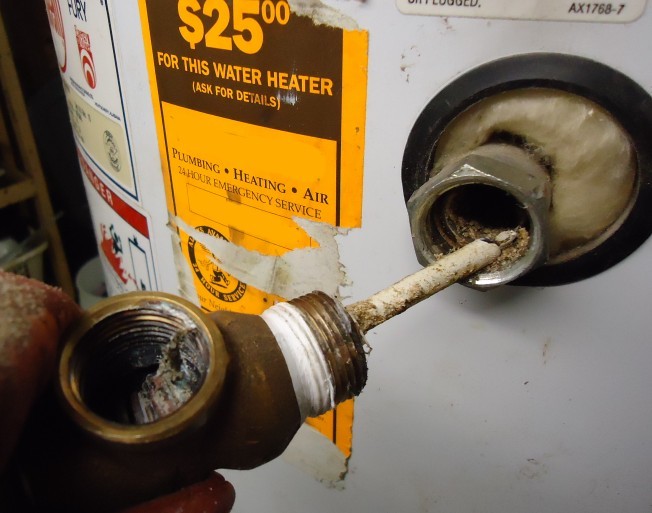Top Methods to Care for Your Home's Hot Water System Successfully
Top Methods to Care for Your Home's Hot Water System Successfully
Blog Article
How do you really feel with regards to What Kind of Maintenance Do Water Heaters Need??

Hot water is necessary for everyday convenience, whether it's for a revitalizing shower or cleaning recipes. To ensure your hot water system runs successfully and lasts much longer, normal maintenance is essential. This post gives practical tips and insights on exactly how to preserve your home's warm water system to avoid disruptions and expensive repair services.
Intro
Maintaining your home's warm water system might seem difficult, yet with a couple of simple actions, you can ensure it operates smoothly for many years to come. This guide covers whatever from understanding your hot water system to DIY upkeep ideas and understanding when to employ expert assistance.
Value of Keeping Your Hot Water System
Regular upkeep not just expands the life expectancy of your hot water system but also guarantees it operates effectively. Overlooking maintenance can cause lowered efficiency, higher energy costs, and even early failing of the system.
Indicators Your Warm Water System Requirements Maintenance
Knowing when your warm water system requires interest can stop major problems. Look out for indicators such as irregular water temperature, strange noises from the heating unit, or rustic water.
Understanding Your Warm Water System
Before diving into maintenance tasks, it's practical to understand the basic elements of your hot water system. Commonly, this consists of the water heater itself, pipelines, anode rods, and temperature level controls.
Regular Monthly Maintenance Tasks
Normal month-to-month checks can aid capture minor issues prior to they rise.
Purging the Water Heater
Flushing your water heater removes sediment accumulation, boosting performance and prolonging its life.
Checking and Changing Anode Rods
Anode poles stop deterioration inside the container. Examining and changing them when worn is critical.
Examining and Readjusting Temperature Setups
Adjusting the temperature level settings makes certain optimal performance and safety and security.
DIY Tips for Upkeep
You can execute several upkeep tasks on your own to maintain your hot water system in leading condition.
Looking for Leaks
On a regular basis inspect pipelines and connections for leaks, as these can bring about water damage and greater costs.
Evaluating Pressure Alleviation Valves
Evaluating the pressure safety valve guarantees it functions properly and prevents extreme stress buildup.
Protecting Pipelines
Insulating hot water pipelines lowers heat loss and can conserve power.
When to Call a Professional
While DIY upkeep is valuable, some concerns call for professional knowledge.
Complex Concerns Calling For Specialist Assistance
Instances include significant leakages, electric issues, or if your water heater is regularly underperforming.
Routine Professional Upkeep Advantages
Professional maintenance can consist of extensive evaluations, tune-ups, and ensuring compliance with safety criteria.
Verdict
Routine upkeep of your home's hot water system is essential for performance, longevity, and cost savings. By complying with these tips and understanding when to seek expert assistance, you can make sure a trusted supply of warm water without unanticipated disturbances.
How to Maintain an Instant Hot Water Heater
Before tinkering with your hot water heater, make sure that it’s not powered on. You also have to turn off the main circuit breaker and shut off the main gas line to prevent accidents. Also turn off the water valves connected to your unit to prevent water from flowing into and out of the appliance. 2. When you’re done, you have to detach the purge valves’ caps. These look like the letter “T†and are situated on either side of the water valves. Doing so will release any pressure that has accumulated inside the valves while at the same time avoid hot water from shooting out and burning your skin. 3. When the purge valves’ caps are removed, you have to connect your hosing lines to the valves. Your unit should have come with three hoses but if it didn’t, you can purchase these things from any hardware or home repair shops. You can also get them from retail stores that sell water heating systems. Read the user’s manual and follow it to complete this task properly. When the hosing lines are connected, open the purge port’s valves. 4. You should never use harsh chemical cleaners or solutions when cleaning your unit. Make use of white vinegar instead. It should be undiluted and you’ll probably use about 2 gallons. 5. Now flush your water heater. This task should probably take about 40 minutes. We can’t give you specific directions for this because the procedure is carried out depending on the type, model and brand of your heater. With that being said, refer to the user’s manual. 6. When you’re done draining the unit, you have to turn off the purge port valves again. Remove the hosing lines that you earlier installed on each of the water valves. Put the valve caps (purge port) back in their respective places and be very careful so as not to damage the rubber discs that are found inside these caps. 7. Now that everything’s back in place, check your user’s manual again to find out how to reactivate your water heating system. 8. Once it is working, turn one of your hot water faucets on just to let air pass through the heater’s water supply pipes. Leave the tap on until water flows smoothly out of it. https://www.orrplumbing.com/blog/2014/september/how-to-maintain-an-instant-hot-water-heater/

As a fervent reader on Water Heater Maintenance Tips You Can't Afford to Forget, I was thinking sharing that piece of content was a smart idea. Those who enjoyed reading our blog entry kindly consider to pass it around. Thanks a bunch for being here. Come back soon.
Visit The Following Page Report this page